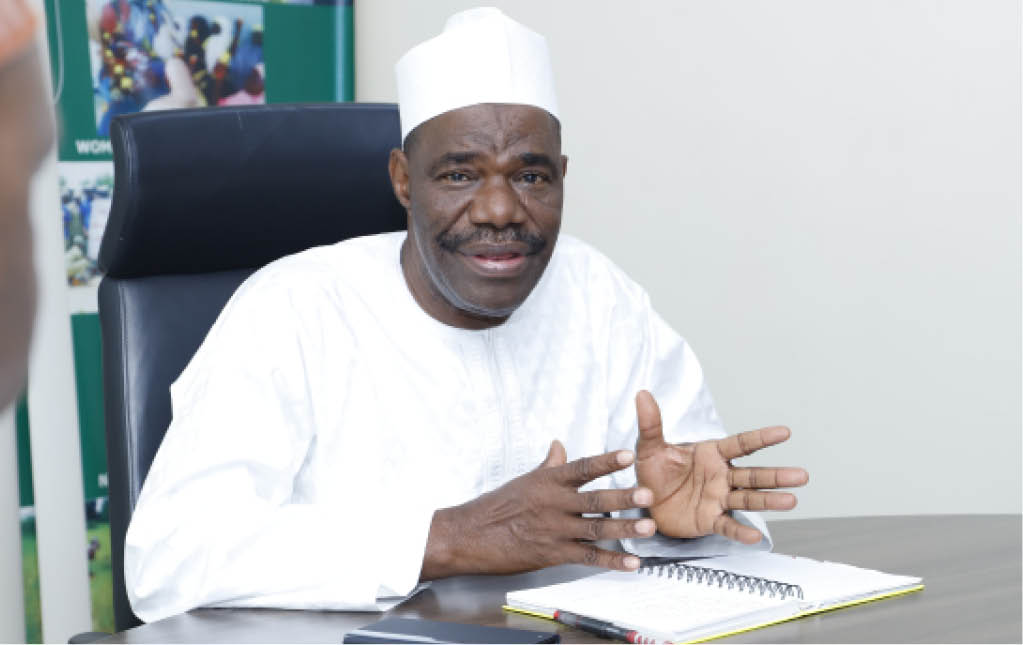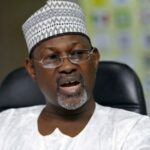Dr Bukar Hassan is the Director General of National Agency for the Great Green wall (NAGGW). He spoke on how they intend to plant 26 million trees to curb desertification and other issues
There is challenge of getting the state and local governments to key into the GGW wall. Have they complied with contributing certain amount of money as approved by NEC?
In the beginning when we started the programme, we realised that the federal government will not be able to realise the mandate alone because rural and social development is the role of the state. We thought that the state should come in. The way we started was saying, this is a programme for the state and the allocation from the federal government, however, we provide financial assistance for you to be able to come in with your technical and financial assistance so that we can work together on this project.
Subsequently, when we became an agency, the enabling act clearly specified the responsibility of the state and the federal government. It became the responsibility of the agencies to go back to the state to say we can do this together; contributions will come from institutions, states and the federal so that we will be able to achieve more. However, you will also be able to help us in getting down to the communities and the act clearly states that we must establish institutions at the state and local government levels. We are trying to play down the issue of financial contribution from the states for now for obvious reasons.
We have got what we called representative of the state government and working with us directly, and the next step is to go to the local government to ask the councils that we are working in their communities, and we need one person who will represent them and be responsible to the community on our behalf and also be responsible to us in terms of getting feedbacks from the communities, and we will follow establishment of committees. At that level, they will work with the desk officer and reach out to communities through other committees.
The major contribution of the states and the communities for now is the land. For instance, the presidency has directed that we plant 26 million trees in the next four years, and that requires a huge land and the only way we can do that is to say federal government will provide X amount of money and what we need from you is to provide the land.
We are not going to take away all the land from farmers; there are different types of field investment that we intend to do. For instance, if you want to do Agro forestry, that is the mixture of trees and crops on your farm, what we will do is to increase the vegetative cover of your farm to protect your soil from erosion and you will continue to rip what you rip in two ways; your crops and trees. When the trees grow up, you will be able to have forage for your animals and woods for domestic use.
But if you want to do woodlot, it means retaining certain amount of land, and it may not be cropable, putting crops on the land and maybe after three to four years maybe the trees would have covered the area, but initial one to three years you continue to crop them and when the trees grow, it becomes something you will be able to have economic value for you and your families.
We can also do border planting; you can plant an economic tree that is found there, and they share the value and they have a permanent boarder and so, it reduces the issue of conflicts where our border lies.
Shelter belts protect the soil and also provide wood and forest resources for the communities, so with the planting of millions of trees, we are not going to take up the entire land of the community and convert it into forest.We increase the vegetative cover in so many ways in order to protect the soil and increase the productivity of the farmers as well.
You once mentioned the issue of fund as a constraint and expecting certain percentage from EFO.Has the agency started receiving the grant?
Yes, the money started coming into the agency as far back as April 2019, and that has improved our funding profile.
We can now do more things from that and along the line, Mr. President approved some additional resources for us towards the realisation of the 26 million trees that will be planted in four years in seven states; the seven most critical states as far as land degradation is concerned. The second trench of fund that was approved for us is from Nature Resource Development Fund. They are all intervention funds from the federal government.
We observed that the project suffered set back as some farmers retrieved their lands, while the issue of vandalism is also affecting the projects. What have you done to address these issues?
If you go into a community and you don’t integrate them into what you want to do, that is the consequences. But if you integrate them and educate them on the benefits, they will derive from the project then they will come along with you.
This is because the education and sensitisation carried out were not sufficient or were not allowed to continue for one reason or the other because it is not a onetime thing, but something you have to continue until everyone is on board.
The most difficult one is when you are planting trees, it has a long gestation period even the hybrid species of those fruit trees; sometimes you may have to wait for two years before you get real value out of it. To a farmer, what does he eat before the two years come so you either bring in what will add value to what he is doing and so he can wait on that to say he may have something seasonal to sell.
We try to emphasise on livelihood; if you improve the livelihoods of the people then everything falls into place.
How do you intend to plant the 26 million trees; over what timeline and at what proportion?
What is intended is that the programme will run for four years.It will involve seven states with one million trees a year. A number of factors determine that; availability of land will determine what we can do; the interest of the community and what species they want will also be a factor, as well as the nature and fertility of the land.
While you are doing the planting, with the rate of the cutting as well, should your mandate not extend at some point up to Abuja?
The UN theme of “cut one plant five” underscores the need for us to remember that the trees you are cutting were planted by somebody years back, and if that person didn’t plant a tree or that tree was not allowed to grow, who would get the one to cut
The idea is I have to cut because I have to use wood for energy to cook and others, then go and cut but please replace it. Now there is also a challenge; someone who is conversant with a place like Yobe, where when you stand on a sand dune, you may not see a tree. Now if you ask people to plant a tree, they will laugh at you.
For such a person, you have to help him to plant a tree by providing water source for him to irrigate because it probably rains two months in the whole of the year, so the tree cannot grow. But in other parts of the country, they have what it takes to plant and nurture to grow.
We want a situation whereby legislation should be done to ban this charcoal thing. Believe me, that is the number one culprit in deforestation, and if we don’t do it, maybe in decades to come, places like Benue, Plateau, middle states will be like Yobe because it is very uneconomical as far as trees are concerned. A bag of charcoal may need up to two or three trees to fill it.
What is happening with the ideal of generating bio-fuel from Jathropha?
A company has come out with the idea of Jathropha, and we are still at the level of sorting out the technicalities. We had a meeting with the ICRC and we submitted the document, but because it’s an international campany, it requires presidential approval, so all the files have been submitted to them so they are just waiting for government to say ‘go ahead’.
This can also pose some challenges which we will be able to surmount. They need land and the beauty of jathropha is that it requires a land that you cannot crop anything, else, it will survive and animals don’t eat it. They will be able to get land to do that and they also intend to have factories to process all the jathropha.It is something that has to go through an entire value chain.

 Join Daily Trust WhatsApp Community For Quick Access To News and Happenings Around You.
Join Daily Trust WhatsApp Community For Quick Access To News and Happenings Around You.


